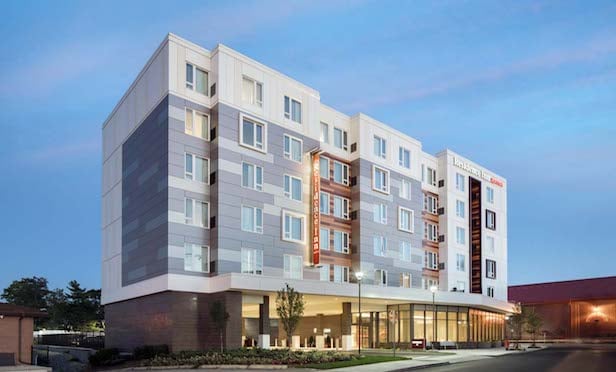NEW YORK CITY—The Blackstone Group's latest venture into multifamily, a $2-billion portfolio buy from a Greystar Real Estate Partners fund that was announced Tuesday afternoon, is far from the largest investment the alternative asset management giant has made in the sector this year. It's also far from the largest apartment deal the industry has seen in 2015, what with the Blackstone-led acquisition of the 11,000-unit Peter Cooper Village/Stuyvesant Town complex in Manhattan for $5.3 billion, Starwood Capital Group's $5.4-billion deal for 72 properties representing about one quarter of Equity Residential's portfolio and Lone Star Funds' $7.6-billion privatization of apartment REIT Home Properties.
Sensing such large-scale demand, Greystar had "executed most of our value-add strategy" on the 10,399-unit, 32-property portfolio it began assembling in 2011, and felt it was "time to take it to the market," Bob Faith, Greystar's chairman and CEO, told Bloomberg Business on Tuesday. Greystar capitalized on the opportunity to sell the portfolio, representing slightly less than one-fith of the 55,000 units it owns, "in one fell swoop. There is a lot of appetite for very high-quality multifamily properties."
And among private equity firms, there's also appetite for a lot of very high-quality multifamily properties. When Blackstone's acquisitions of the Greystar portfolio and the Stuy-Town complex are completed, the company will control approximately 57,000 apartment units, Bloomberg reported. Starwood Capital's pool of assets is even deeper: the company has acquired or has agreed to acquire more than 67,800 apartment units over the past 12 months, including the EQR portfolio.
As a new report from Marcus & Millichap makes clear, multifamily investors have fundamentals on their side. "Nationwide, apartment vacancy remains tight and will support robust rent gains," MMI reported this week. "Construction has increased substantially over the past few years and will remain elevated in the near term, though continued growth in employment will create new rental households and drive demand."
Demographic trends, too, remain "highly favorable for the apartment sector, with a substantial lift coming from millennials entering the workforce and forming households, and older adults and empty nesters downsizing from owner-occupied housing," according to MMI. The employment-to-population ratio for the prime renter cohort—ages 25 to 34—is at an all-time high, MMI added, noting that "increasing job growth translates to greater mobility, boosting apartment demand nationwide. Higher down payment requirements, limited construction of 'starter homes,' and stringent mortgage underwriting also continue to suppress single-family home purchases by first-time buyers and delay the transition from rentals to single-family homes."
Accordingly, MMI predicts that apartment vacancy will decline by 20 basis points by year's end to 4.3%, notwithstanding what the investment sales firm calls "a post-recession high" of 250,000 units coming on line this year. In the coming year, MMI says, "Supply and demand trends will remain closely aligned."
Meanwhile, Bloomberg reiterates that multifamily properties have led the five-year recovery in commercial real estate, with values exceeding the 2007 peak by about 34%, according to Moody's Investors Service and Real Capital Analytics. "In big cities, prices are as much as 57% higher than prior records," Bloomberg reported Tuesday.
© 2025 ALM Global, LLC, All Rights Reserved. Request academic re-use from www.copyright.com. All other uses, submit a request to [email protected]. For more information visit Asset & Logo Licensing.








